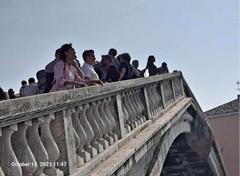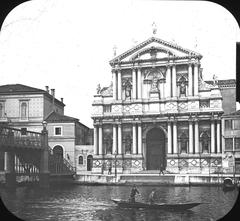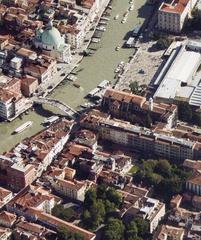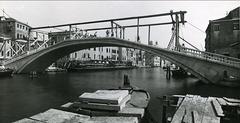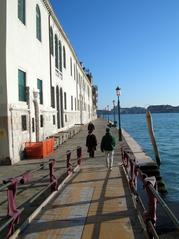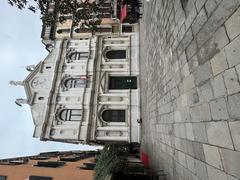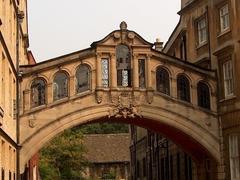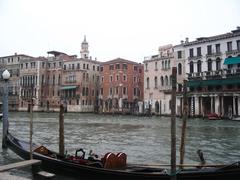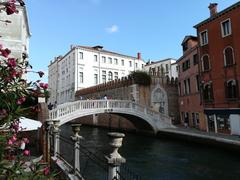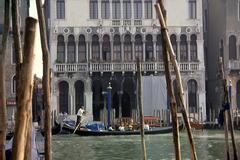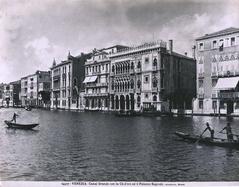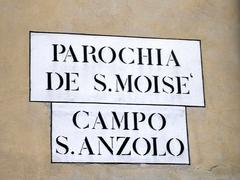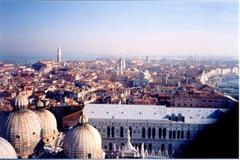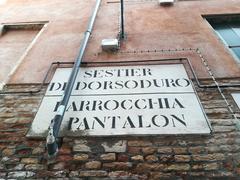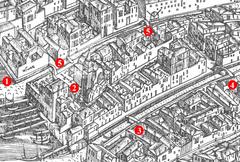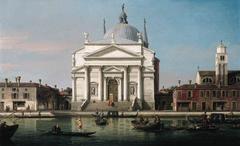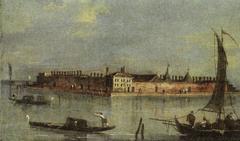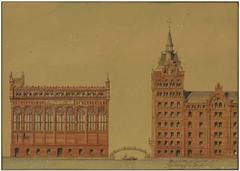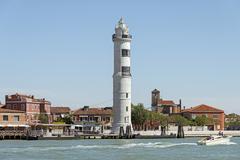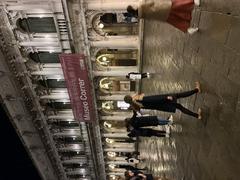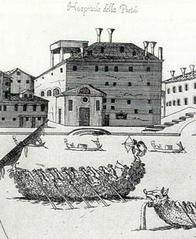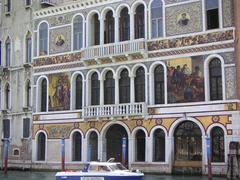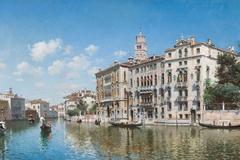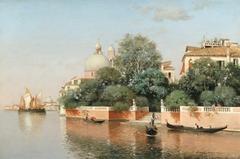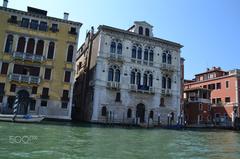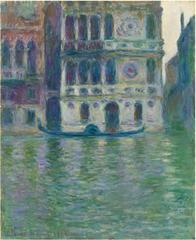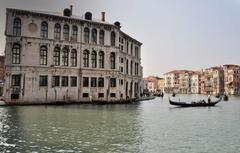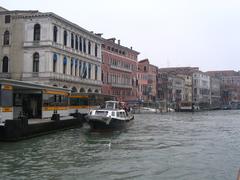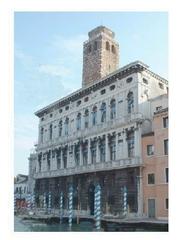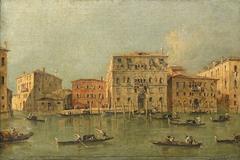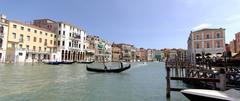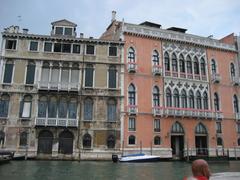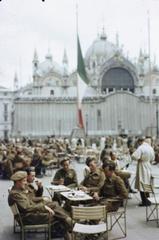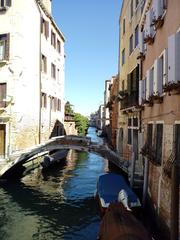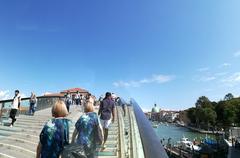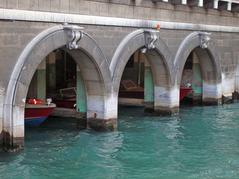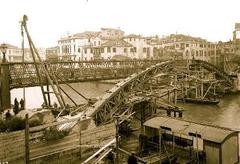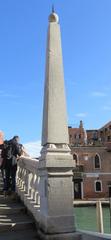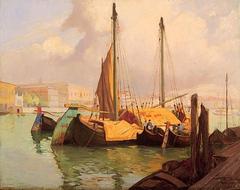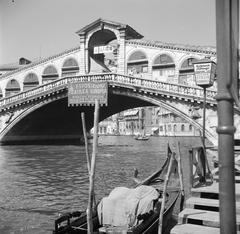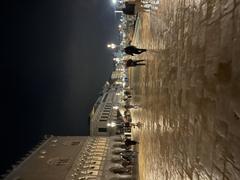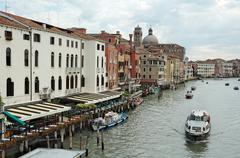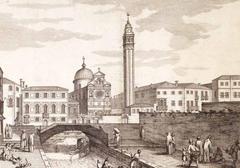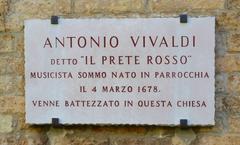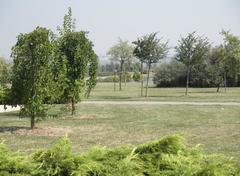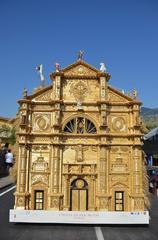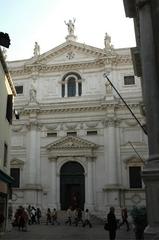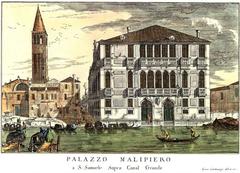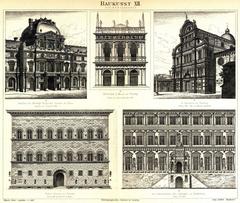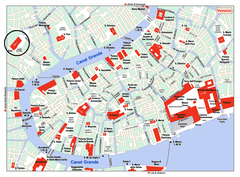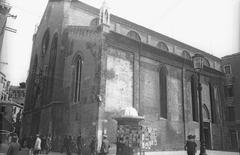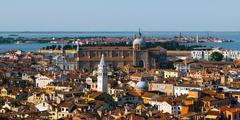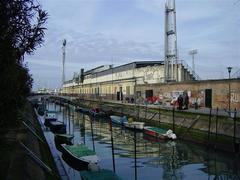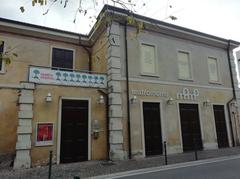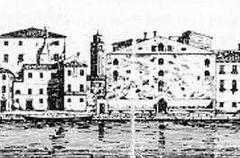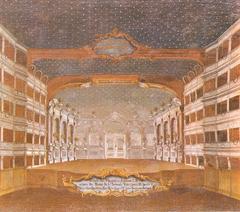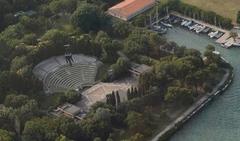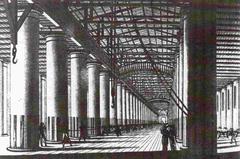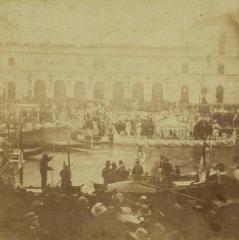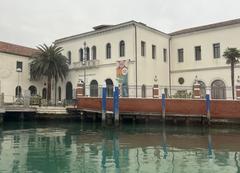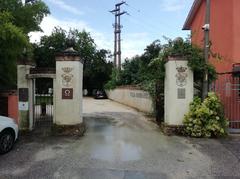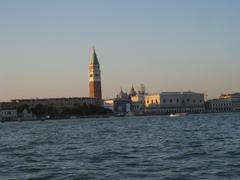
Complete Guide to Visiting Ponte degli Scalzi in Venice
Publication Date: 19/07/2024
Introduction to Ponte degli Scalzi
Venice, Italy, with its intricate network of canals and historic charm, is a dream destination for many travelers. Among its numerous architectural marvels, the Ponte degli Scalzi stands out as one of the four bridges spanning the iconic Grand Canal. Known as the Bridge of the Barefoot Monks, it holds a significant place both in the city’s history and in the hearts of its visitors. This comprehensive guide will delve into the rich history, architectural beauty, and practical visitor information about Ponte degli Scalzi, ensuring that your visit is both informative and memorable. Whether you’re interested in the historical context, the best times to visit, or nearby attractions, this guide covers all aspects to help you make the most of your trip to this Venetian landmark. For further reading on the history and significance of the Ponte degli Scalzi, you can visit the Venice Tourism Official Website and Architectural History of Venice.
Contents Overview
- History of Ponte degli Scalzi
- Early Conception and Construction
- Architectural Design
- Historical Significance
- Renovations and Preservation
- Visitor Information
- Tickets and Visiting Hours
- How to Get There
- Best Times to Visit
- Travel Tips
- Guided Tours
- Photographic Spots
- Accessibility
- Nearby Attractions
- Chiesa degli Scalzi
- Cannaregio District
- Special Events
- FAQ
- Modern-Day Relevance
History of Ponte degli Scalzi
Early Conception and Construction
The Ponte degli Scalzi, also known as the Bridge of the Barefoot Monks, is one of the four bridges spanning the Grand Canal in Venice, Italy. Its name derives from the nearby Chiesa degli Scalzi (Church of the Barefoot Monks), a Carmelite church. The bridge was constructed to replace an older wooden bridge that had become inadequate for the increasing pedestrian traffic.
The initial design and construction of the Ponte degli Scalzi began in the early 1930s. The project was part of a broader initiative to modernize Venice’s infrastructure. The bridge was designed by the Italian engineer Eugenio Miozzi, who was renowned for his work on several other Venetian bridges and infrastructure projects. The construction was completed in 1934, and the bridge was officially opened to the public in the same year.
Architectural Design
The Ponte degli Scalzi is an arch bridge made of Istrian stone, a material commonly used in Venetian architecture due to its durability and aesthetic appeal. The bridge’s design is characterized by its single-span arch, which measures approximately 40 meters in length. The arch design was chosen to allow for the uninterrupted flow of boat traffic beneath the bridge, a crucial consideration given the Grand Canal’s role as a major transportation artery in Venice.
The bridge’s architectural style is a blend of traditional Venetian elements and modern engineering techniques. The use of Istrian stone gives the bridge a timeless appearance, while the engineering methods employed in its construction reflect the technological advancements of the early 20th century. The bridge’s balustrades are adorned with simple yet elegant stone carvings, adding to its aesthetic appeal.
Historical Significance
The construction of the Ponte degli Scalzi marked a significant milestone in the modernization of Venice’s infrastructure. Prior to its construction, the only other bridges spanning the Grand Canal were the Rialto Bridge and the Accademia Bridge. The addition of the Ponte degli Scalzi provided a much-needed crossing point for pedestrians, particularly those traveling to and from the Santa Lucia railway station, which is located near the bridge.
The bridge also played a crucial role during World War II. Venice, like many other Italian cities, was affected by the war, and the Ponte degli Scalzi served as a vital link for the movement of people and goods. Despite the challenges posed by the war, the bridge remained intact and continued to serve the city’s residents and visitors.
Renovations and Preservation
Over the years, the Ponte degli Scalzi has undergone several renovations to ensure its structural integrity and preserve its historical significance. One of the most significant renovations took place in the 1980s when the bridge’s stonework was cleaned and restored. This renovation was part of a broader effort to preserve Venice’s architectural heritage and ensure the longevity of its historic structures.
In recent years, the bridge has also been the focus of efforts to improve accessibility for people with disabilities. In 2011, a temporary ramp was installed to provide wheelchair access to the bridge. While the ramp was later removed, the initiative highlighted the ongoing efforts to make Venice’s historic sites more accessible to all visitors.
Visitor Information
Tickets and Visiting Hours
Visiting the Ponte degli Scalzi is free as it is a public bridge and does not require any tickets. The bridge is accessible 24 hours a day, making it convenient for both early morning and late-night strolls.
How to Get There
The Ponte degli Scalzi is located near the Santa Lucia railway station, making it easily accessible for visitors arriving by train. From the station, it is just a short walk to the bridge. Vaporetto (water bus) services also stop nearby, providing convenient access from various parts of the city.
Best Times to Visit
To avoid the crowds, the best times to visit the Ponte degli Scalzi are early in the morning or late in the evening. These times also offer the best lighting for photography, with the morning light casting a soft glow and the evening light providing dramatic shadows.
Travel Tips
Guided Tours
While the Ponte degli Scalzi itself does not offer guided tours, several guided walking tours of Venice include the bridge as part of their itinerary. These tours provide valuable context and historical insights, enhancing your visit to this iconic landmark.
Photographic Spots
The Ponte degli Scalzi offers stunning views of the Grand Canal and the surrounding architecture. For the best photos, position yourself on the bridge facing either direction along the canal. The nearby Chiesa degli Scalzi also provides a beautiful backdrop for photographs.
Accessibility
While the Ponte degli Scalzi is not currently equipped with permanent ramps for wheelchair access, efforts are ongoing to improve accessibility. Visitors with mobility concerns may find it challenging to navigate the bridge’s steps. It is advisable to check for any temporary accessibility measures before planning your visit.
Nearby Attractions
Chiesa degli Scalzi
Located just steps away from the bridge, the Chiesa degli Scalzi is a stunning example of Baroque architecture. The church is known for its intricate façade and impressive interior, making it a must-visit for those interested in religious and architectural history.
Cannaregio District
The bustling Cannaregio district is a short walk from the Ponte degli Scalzi. This vibrant area is home to numerous shops, restaurants, and historical sites, offering a glimpse into the everyday life of Venetians. Highlights include the Jewish Ghetto and the Fondamenta della Misericordia.
Special Events
The Ponte degli Scalzi is occasionally used for special events and celebrations in Venice. These events can range from regattas on the Grand Canal to cultural festivals that showcase the rich heritage of the city. Be sure to check the local event calendar for any happenings during your visit.
FAQ
What are the visiting hours for Ponte degli Scalzi?
The Ponte degli Scalzi is accessible 24 hours a day, making it convenient for visitors at any time.
Do I need to buy tickets to visit Ponte degli Scalzi?
No, visiting the Ponte degli Scalzi is free of charge as it is a public bridge.
What are some nearby attractions to Ponte degli Scalzi?
Nearby attractions include the Chiesa degli Scalzi and the Cannaregio district, both of which offer rich historical and cultural experiences.
Modern-Day Relevance
Today, the Ponte degli Scalzi continues to serve as a vital pedestrian crossing and a symbol of Venice’s rich history and architectural heritage. The bridge remains a testament to the city’s ability to blend tradition with modernity, and it stands as a reminder of the importance of preserving Venice’s unique cultural and historical identity.
In recent years, the bridge has also become a focal point for discussions about the impact of tourism on Venice. The city receives millions of visitors each year, and the Ponte degli Scalzi, like many other historic sites, faces challenges related to overcrowding and wear and tear. Efforts to manage tourism and preserve the bridge’s structural integrity are ongoing, reflecting the broader challenges faced by Venice as it navigates the complexities of being a world-renowned tourist destination.
Sources and Further Reading
- Venice Tourism Official Website, 2024, https://www.veneziaunica.it/en/content/ponte-degli-scalzi
- Architectural History of Venice, 2024, https://www.architecturaldigest.com/story/venice-architecture
- Historical Bridges of Venice, 2024, https://www.italymagazine.com/featured-story/bridges-venice
